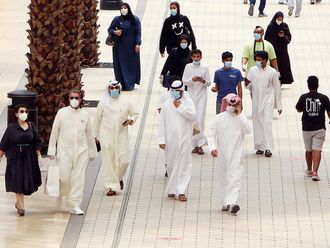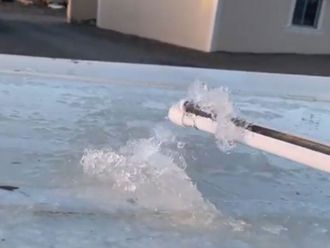
Manama: On January 4, Kuwait will witness a partial solar eclipse, with along other Middle East countries, said astronomer and historian Adel Al Sadoon.
The eclipse will begin around 10:45am and end at around 1:34pm, he said.
"The centre of the eclipse will occur at 12:09 pm where the people see the maximum coverage of the sun by the moon," Al Sadoon said. "At this time, 31 per cent of the sun will be covered. It will be the first of six solar and lunar eclipses to be seen worldwide in 2011. There will be four solar eclipses and two lunar eclipses," the Kuwaiti astronomer said, quoted by Kuwait Times on Sunday.
In Kuwait, people will see the partial solar eclipse on January 4 and two partial lunar eclipses on June 5 and December 10, he said.
"Those wishing to observe the eclipse need to take special precautions to protect their eyes from harmful Ultra Violet (UV) rays. It is very important when monitoring the eclipse not to look directly into the sun as it can cause serious damage to the eye's retinas," he said. "Prolonged viewing of the sun, especially during an eclipse, can cause loss of sight."
The astronomer warned that wearing regular sunglasses or films, X-ray or photographic film, computer disks or smoked glass would not be enough to block the harmful UV rays from entering the eye and causing damage.
"In order to see the eclipse safely, you should only use special eclipse glasses. If these are not available then welder's glasses with a number 14 filter can be used," he said.
A solar eclipse occurs when the moon moves in front of the sun from people's perspective on earth. In the case of a full solar eclipse, the daytime sky can go very dark for several minutes as the moon covers the sun's rays. An eclipse of the sun only occurs at a new moon when the moon passes between the earth and sun.
The last total solar eclipse took place on July 11 and lasted six minutes and 39 seconds.
According to Nasa's eclipse website, the next total solar eclipse will be on November 13, 2012. The four minute and two second total solar eclipse will be visible over Australia, New Zealand, South Pacific and south of South America.











